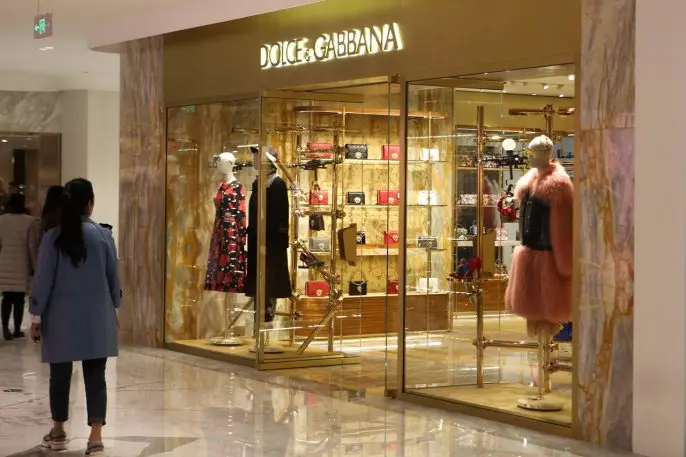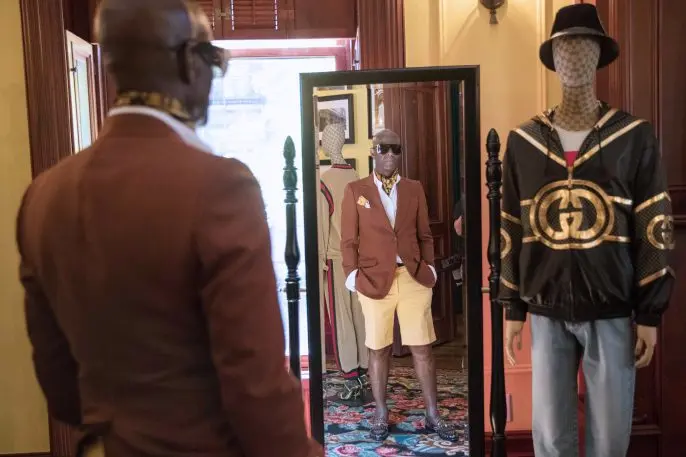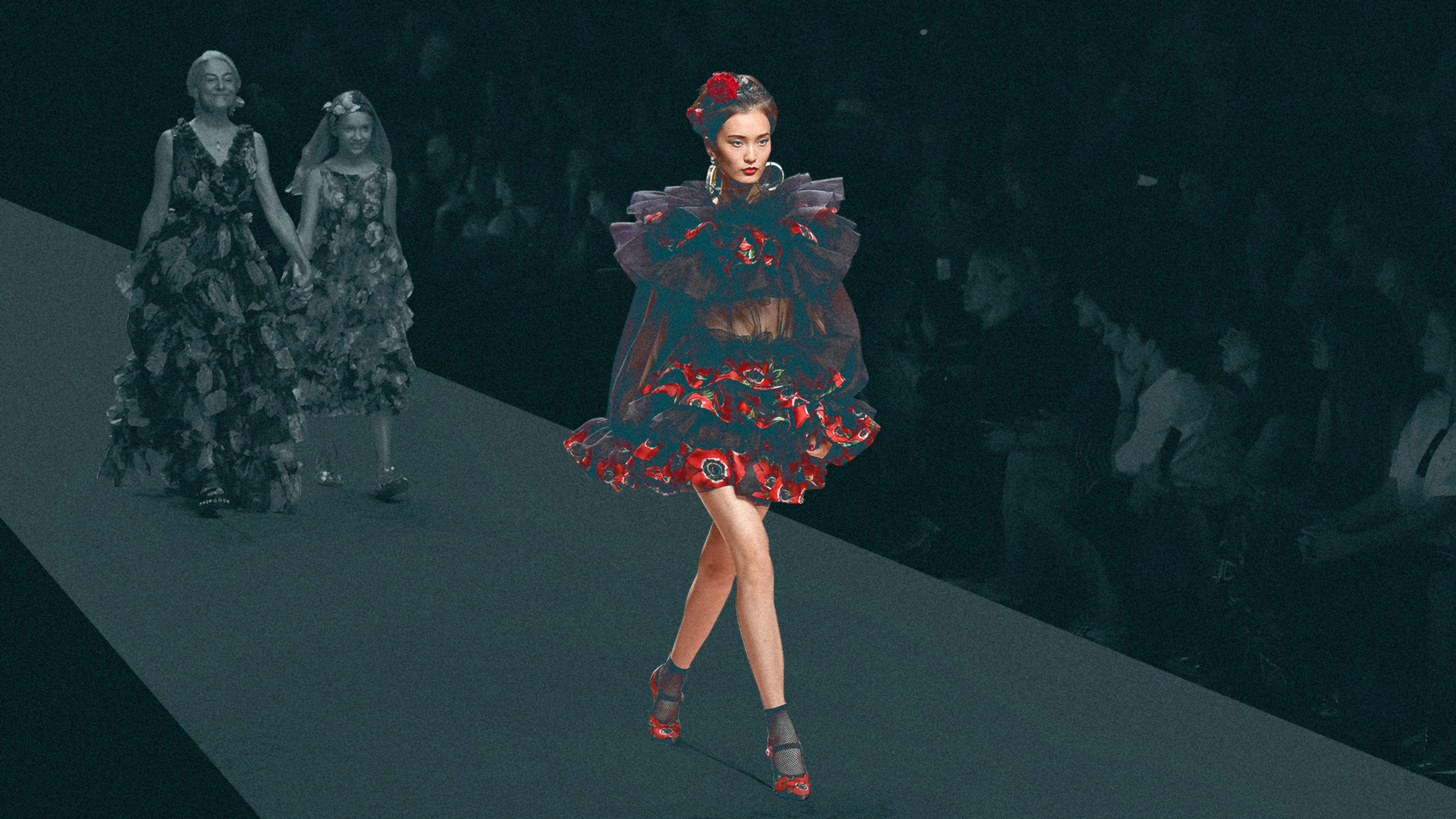In a recent Dolce & Gabbana advertisement, a Chinese woman struggles to eat spaghetti. She looks baffled and confused, an ingenue who has limited experience with pasta. She is so provincial that she uses her chopsticks to awkwardly twirl the noodles. What an imbecile, the viewer is supposed to think, having a good laugh at her expense.
The woman in the ad wears a sparkly red Western-style dress, rather than a traditional Chinese outfit, like a qipao. The not-so-subtle message embedded in this video is that the Chinese woman embraces European fashion, but she is too uneducated–or perhaps too stupid–to really understand European culture.
It’s not the first time D&G has made racist or otherwise culturally insensitive ads about Asian people. Last year, the brand launched a campaign featuring models mingling with poor Chinese people in underdeveloped parts of the country, prompting Chinese consumers to Weibo, China’s Twitter-like platform, to complain that the brand was deliberately presenting their country as a third-world nation.
D&G isn’t the only luxury brand that has come under attack by Chinese consumers. Last year, Chanel put out an ad entitled “Coco Served Hot” where a woman walks in New York’s Chinatown wearing a pointed hat traditionally worn by poor Asian rice farmers. She carries a bindle with Chanel goods hanging from them that appeared to reference the counterfeit products that have been sold in this neighborhood. In Paris, a Chinese man was jostled and manhandled by employees at a Balenciaga boutique.
In all of these cases, Chinese consumers–both in the mainland and abroad–have lashed out in anger at the offending brands. While racism in luxury fashion is as old as the industry itself, consumers are not letting brands get away with trafficking in racist stereotypes or systematically mistreating people of a particular ethnicity. They’re making their anger felt on social media. The D&G ad, which could have been a small gaffe in the past, has snowballed into viral scandal that has reverberated around the world. Reuters reports that the brand may lose as much as half a billion dollars in revenue as a result.

DG Loves China
This latest D&G video was designed to drum up excitement about D&G’s first-ever fashion show in China. And the campaign was called “DG Loves China.” I don’t think the name of the campaign was ironic. D&G, as well as other luxury brands, love Asian consumers. Or at least their money.
For decades, European and Asian designers have courted Asian consumers as the region has become an economic powerhouse. Last year, Chinese buyers accounted for 32% of the entire luxury goods market, a larger percentage than any nationality, and were responsible for helping luxury brands rebound after years of slow growth.
I lived in Singapore and Jakarta in the mid-’90s, when Western luxury brands began popping up in high-end shopping centers. I saw their storefronts appear overnight in the glitzy downtown areas all over the region, from Taipei to Chennai to Kuala Lumpur. But even as these brands persuaded us to give them our money, there was also an air of condescension that came with these transactions.
My mom and I recall wondering why Caucasian salespeople didn’t seem particularly interested in helping us when we strolled into the stores. Were we reading too much into it? Or was she being patronizing to us because we were Asian? Or did all luxury brands treat customers so poorly?
I suspect that this D& G video hit a nerve because it validates Asian consumers’ feelings that these brands have always treated us with an attitude of superiority. The ad suggests that D&G is happy to take a Chinese person’s money, but they don’t believe these nouveau-riche consumers will fully appreciate the brand’s heritage or the craftsmanship of the products.

The Racism Is Real
And, in fact, it is possible to trace racism back to D&G’s founder, Stefano Gabbana. We saw his true feelings about the Chinese people laid bare in a series of text messages between Gabbana and fashion writer Michaela Phuong, which were leaked to Diet Prada, an Instagram account that highlights the dark underbelly of the fashion industry.
In the exchange, Gabanna allegedly says, “If the Chinese feel offended by a girl who (eats) pizza or pasta with chopstick (it) means those Chinese feel inferior . . . and then it’s (their) problem not ours!!!” At another point, he says, “China Ignorant Dirty Smelling Mafia.”
D&G claimed that Gabanna’s account was hacked. But few people believed this, given the founder’s long history of making racist, homophobic, and sexist remarks. This is the same man who called Selena Gomez ugly in an Instagram comment, and told Reuters in April of this year, “I don’t want a Japanese designer to design for Dolce & Gabbana.” Even the New York Times questioned the veracity of the hack explanation. “You can’t take on everyone from Selena Gomez to gay parents with bluster and venom and then claim you were hacked and expect to be believed,” wrote Vanessa Friedman and Sui-Lee Wee.
Gabbano’s shocking remarks to Phuong, coupled with the offensive D&G video, prompted a widespread protest against the brand in the middle of November. Chinese celebrities and models walked out of the show and consumers recorded themselves burning their D&G products. Americans and Europeans have begun to distance themselves from the brand. D&G products disappeared from Chinese online retailers and the department store Lane Crawford. And eventually the brand was forced to cancel the show. Reuters reports that D&G makes annual revenue to the tune of $1.5 billion, and a third of that could be at risk because of this crisis.

The Enduring Racism in Luxury Fashion
Racism is deeply entrenched in luxury fashion. Consider how luxury brands treated African-American consumers in the ’80s and ’90s. This was a time when logo-mania was in full force, and black celebrities from Mike Tyson to Salt-N-Pepa to LL Cool J wore outfits plastered with the names of their favorite brands.
But while black consumers were interested in luxury brands, these European houses seemed to treat them with disdain: Looking back at ads from these years, it is rare to find even one person of color. Nor did these brands respond to the fashion trends bubbling up in the black community, including the new streetwear styles that elevated sneakers, hoodies, and jeans into an art form.
During those years, a Harlem tailor called Daniel Day–aka Dapper Dan–began crafting expensive outfits out of leather and fur that responded to the trends coming out of the black community in a way that the luxury brand themselves were not. Day embossed his creations with counterfeit logos from luxury brands–Fendi and Louis Vuitton and Gucci–that black consumers admired. These brands sent their lawyers after him, driving his business into oblivion. At the time, the brands weren’t particularly worried about Day stealing business from them; Gucci and Fendi weren’t making streetwear looks, so it wasn’t like Day was eating into their sales. When I spoke to Day in March 2018, he told me he thought brands simply did not want to be associated with black consumers and black culture.
But, as with China, the luxury brands swallowed their pride when it was clear that there was money to be made when streetwear moved into the mainstream. In a major shift, almost all luxury fashion houses eventually produced streetwear collections, making high-end T-shirts, hoodies, sneakers, and bomber jackets. Many looked very similar to Day’s creations.
A Dangerously Exclusionary Industry
Luxury fashion has always been inherently exclusionary. The exorbitant price point of luxury products means that only a small, wealthy segment of the population can afford these goods.
In the past, these brands have targeted a privileged class of white consumers. They’ve also historically had an adversarial relationship with less wealthy demographics, like African Americans and Asians, who might create counterfeits like the ones seen in Harlem or Chinatown. Race and class are inextricably linked: When these designers and brands begin to target black and Asian consumers, their entrenched prejudices against these communities sometimes bubble to the surface.
Over the last few days, D&G’s founders Stefano Gabbana and Domenico Dolce released a video apology. They stare into a camera with sullen, serious faces and speak in Italian, saying, “We have made mistakes in interpreting your culture.” They also point out, “Our families have always taught us to respect the various cultures of the world.”
Chinese consumers don’t seem particularly impressed with this apology, which seems a bit forced and defensive. The anger toward D&G continues to brew. With some analysts reporting that it could cost the company $500 million, it threatens to sink the brand. The interaction between D&G and Chinese consumers reveals how the locus of power has shifted away from the luxury brands to the people who are exposed to their marketing. We’ve seen this happen across across industries. Airlines, grocery stores, fast-fashion conglomerates, and beauty brands all regularly experience backlash from consumers when they behaved offensively. It’s clear that luxury brands are not exempt: Consumers will hold their feet to the fire.
D&G might consider taking a page from Gucci’s playbook. Gucci creative director Alessandro Michele hasn’t been shy about acknowledging the brand’s history of racism. He sent a model down the runway in a well-known puffed sleeve outfit that Dapper Dan had created in the ’80s, giving him credit for the design and later announcing a long-term partnership with his Harlem studio–several decades after suing him for copyright infringement.
For Gucci, it took a series of dramatic gestures to begin to make amends for years of egregious racism. If D&G is looking for its own response to the crisis, perhaps Stefano Gabbana could reverse his former stance and hire an Asian designer? Just an idea.
Recognize your brand’s excellence by applying to this year’s Brands That Matter Awards before the early-rate deadline, May 3.
